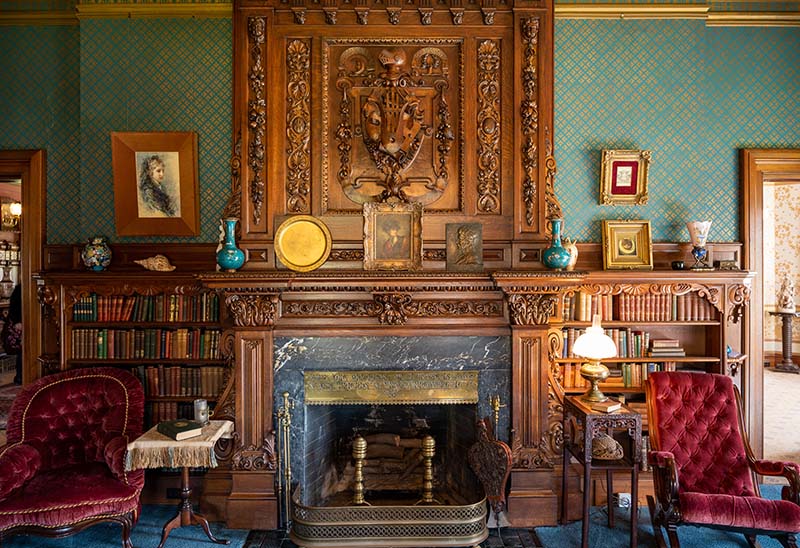Mantlepiece

| Maker | Unknown |
| Date of Creation | c. 1850 |
| Location | Ayton, Scotland (Used in Hartford, Connecticut) |
| Materials | Oak, brass |
| Institution | The Mark Twain House & Museum |
| Credit Line | Museum purchase |
| Accession Number | 1958.7 |
| Photo Credit | Photograph by Alana Borges-Gordon, courtesy of The Mark Twain House & Museum, Hartford, CT |
The oak chimneypiece was purchased by Samuel “Mark Twain” and Olivia “Livy” Clemens from Ayton Castle (Scotland) in 1873 and was installed in the Hartford house in 1874. The mantlepiece was too large for the space above the fireplace, however, so a carved piece was removed from the top and mounted over the entrance way to the dining room. Ayton Castle, its source, was not a very old castle, built in 1851 as part of the same fascination with things Medieval that brought the Gothic craze to America. The mantel is carved with masks, scrolls, musical instruments, and garlands of fruit, along with a coat of arms that combines the heraldry of the two families of nouveaux riches who owned the castle, the Mitchells and the Inneses. Under these, the Clemenses placed a pierced brass plate with another motto, plucked from Ralph Waldo Emerson, that is more suited to the bustling hospitality of their home: “The ornament of a house is the friends who frequent it.” The addition of the Emerson quote made the placement of the mantlepiece in the library particularly poignant, as the library served as a locus for creativity for the Clemens family. It is in this room that they told each other stories using objects on the mantle, enacted plays, and read aloud to family and friends. The library also served as a place where Twain would write, and Livy would edit some of his most important books, including The Adventures of Tom Sawyer and Adventures of Huckleberry Finn. Collectively, Mark Twain, his family, and his friends helped shape the development of an “American voice,” and this mantlepiece and its adornments were not only witness to this creation, but were active participants in the creative activities held in the library of Twain’s beloved Hartford home.
